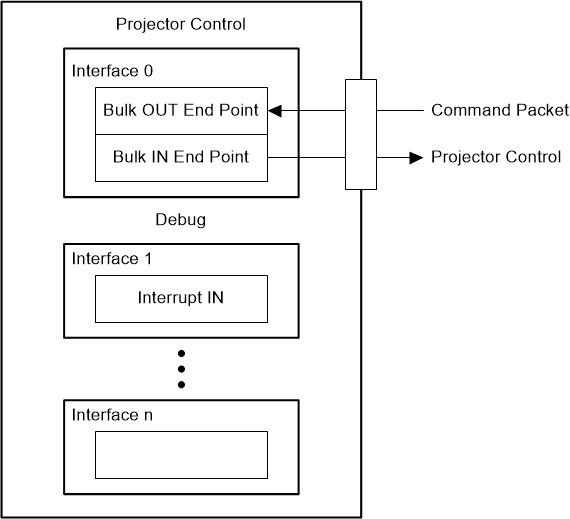DLPU082B August 2021 – August 2022 DLPC7540
- Programmer's Guide
- Trademarks
- 1 Scope
- 2 References
- 3 Acronyms
- 4 System Boot
- 5 System Status
- 6 Version
- 7 Power Modes
- 8 Display Modes
- 9 Source Detection and Configuration
- 10Internal sources
- 11Display Formatting
- 12Image Processing
- 13Illumination Control
- 14Peripherals
- 15Interface Protocol
- 16Command Protocol
- 17Auto-Initialization Batch File
- 18Command Descriptions
- 19System Commands
- Revision History
15.3 USB
The DLPC7540 controller has USB OTG 2.0 compliant hardware. When connected to a USB host, the controller configures as USB device (target) mode operating at high speed (480 Mbit/s).The controller enumerates one of the interfaces as a generic WinUSB device with two bulk endpoints. A USB bulk transfer sends the command and response packets through these endpoints. The OUT endpoint is used for command packet and the IN endpoint is used for response packet. The USB transfer size can vary from 1 byte to 512 bytes. When the host sends the USB IN request, the controller responds with NAK until there is a response packet ready from the software.
 Figure 15-1 USB Core
Figure 15-1 USB Core